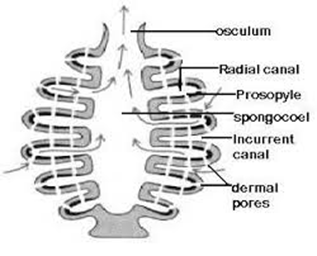Understanding Mineral Nutrition in Plants: A Simple Guide for Students
Understanding Mineral Nutrition in Plants: A Simple Guide for Students
Mineral nutrition is a crucial aspect of plant biology, essential for growth, development, and reproduction. Every plant requires both macronutrients and micronutrients, absorbed from soil, water, or air, to perform basic physiological functions. In this guide, we’ll break down the methods used to study mineral requirements in plants, from ash analysis to hydroponic cultures, and understand the criteria for essential elements.
Why Do Plants Need Minerals?
Plants, like all living organisms, need energy and nutrients for survival. While they produce carbohydrates via photosynthesis, minerals are absorbed from the soil and serve as building blocks for proteins, enzymes, nucleic acids, and other vital compounds.
Minerals are needed in specific quantities. Macronutrients like nitrogen (N), phosphorus (P), and potassium (K) are required in large amounts, whereas micronutrients such as zinc (Zn), boron (B), and manganese (Mn) are needed in smaller doses but are equally critical.
Methods to Study Mineral Requirements in Plants
1. Analysis of Plant Ash
One of the most fundamental techniques used to determine mineral content is plant ash analysis.
-
Fresh plant material is dried at 70–80°C to remove all water content.
-
The dried matter is then weighed to obtain its dry weight.
-
This dry matter contains polysaccharides, proteins, organic acids, and fats.
-
It is then burnt in a furnace at around 600°C, which removes all organic components by oxidation, releasing gases like CO₂, NH₃, and SO₂.
-
What remains is plant ash, composed solely of mineral elements.
-
The ash is then analyzed to determine the types and quantities of minerals present.
👉 However, this method does not reveal how the minerals are utilized or whether they are essential for plant survival.
2. Sand Culture Experiment
This is a more advanced technique to study the effect of individual mineral deficiencies:
-
Sterile sand is prepared by washing it with HCl, removing all natural minerals.
-
It is then washed with distilled water.
-
Plants are grown in this clean sand, and nutrient solutions are added.
There are two groups:
-
Control plants: Given all essential minerals.
-
Deficient plants: One or more nutrients are deliberately left out.
The difference in growth and deficiency symptoms helps determine the role of specific minerals.
👉 Common deficiencies observed include:
-
Yellowing leaves (chlorosis): Often due to nitrogen or magnesium deficiency.
-
Stunted growth: May be due to phosphorus deficiency.
3. Water Culture (Hydroponics)
Developed as early as 1860 by Sachs, this technique involves growing plants without soil, using a nutrient-rich water solution.
-
All required minerals are dissolved in water.
-
Roots are submerged in this solution.
-
It allows precise control over nutrient intake and is widely used in both labs and commercial agriculture.
Hydroponics helps study:
-
How individual minerals affect growth.
-
Interaction between multiple nutrients.
-
Alternative methods of plant cultivation in limited soil areas.
Criteria for Essentiality of an Element
Not all elements found in a plant are essential. There are specific criteria used to determine whether a mineral is essential:
-
Absolutely necessary: The plant cannot complete its life cycle without it.
-
Direct role in metabolism: Must be part of key biological processes, such as forming structural or functional molecules.
-
Cannot be replaced: Its function is specific and cannot be substituted by another element.
-
Lack causes visible symptoms: Deficiency must result in clear and correctable disorders.
-
Reversibility: Supplying the missing element should correct the deficiency.
List of 17 Essential Elements
These elements are classified as either macronutrients or micronutrients:
-
Macronutrients: C, H, O, N, P, K, Ca, Mg, S
-
Micronutrients: B, Mn, Fe, Zn, Cu, Mo, Cl, Ni
Each of these plays a unique role in plant health. For example:
-
Nitrogen (N): Essential for amino acids and proteins.
-
Phosphorus (P): Important for energy transfer (ATP).
-
Potassium (K): Helps in enzyme activation and water regulation.
Modern Alternatives: Vermiculite
Sometimes, growing plants in sand can be challenging. That’s where vermiculite comes in—a mineral heated in a furnace to make it lightweight and porous.
Advantages of Vermiculite:
-
Sterile and chemically inert.
-
Higher water-holding capacity than sand or soil.
-
Does not degrade easily and can be reused.
Used widely in cutting plants and seed germination setups, vermiculite has become a reliable medium in experimental and commercial plant growth.
🌱 Conclusion
Studying mineral nutrition in plants helps us understand which elements are essential, how deficiencies affect growth, and what methods can best reveal these insights. From ash analysis to hydroponics, every technique offers a unique perspective. For students, grasping these methods builds a solid foundation in plant physiology, useful for exams, research, and beyond.




Comments
Post a Comment